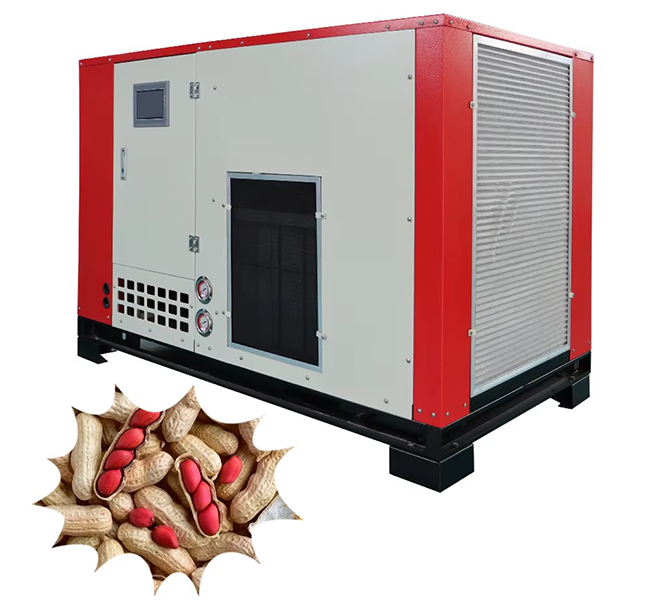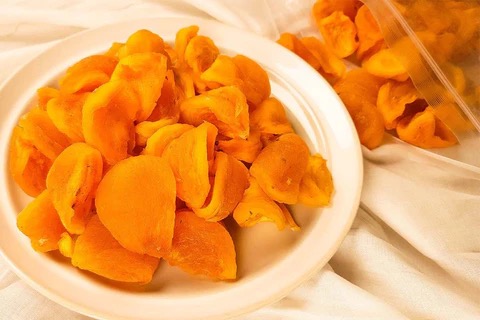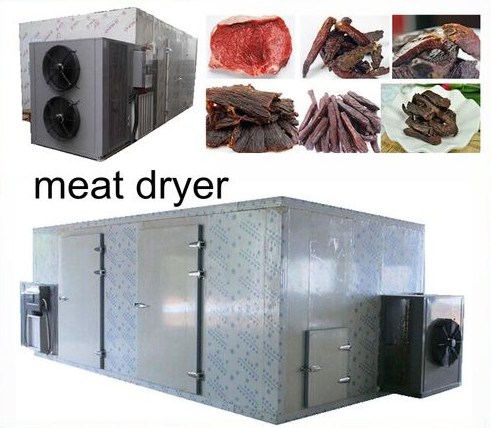
Content Menu
● What is a Food Dehydrator?
● Benefits of Using a Food Dehydrator
● How Does a Food Dehydrator Work?
● Types of Foods You Can Dehydrate
>> Popular Foods to Dehydrate
● How to Choose a Food Dehydrator
● Dehydration Techniques
● Common Mistakes to Avoid
● Health Benefits of Dehydrated Foods
● Practical Uses for Dried Foods
● Conclusion
● FAQ
>> 1. What types of foods can I dehydrate?
>> 2. How long does it take to dehydrate food?
>> 3. Can I dehydrate cooked foods?
>> 4. How should I store dried foods?
>> 5. Is it cost-effective to use a dehydrator?
● Citations:
Food dehydration is a time-honored method of preserving food that has gained renewed popularity in recent years. With the rise of health-conscious eating and sustainable living, many are asking, "Do I need a food dehydrator?" This article will explore the benefits of food dehydrators, how they work, and why they might be a valuable addition to your kitchen.

What is a Food Dehydrator?
A food dehydrator is an appliance designed to remove moisture from food through low-heat air circulation. This process inhibits the growth of bacteria, yeast, and mold, which can spoil food. By reducing moisture content, dehydrators extend the shelf life of various foods while retaining their nutritional value.
Benefits of Using a Food Dehydrator
Using a food dehydrator offers numerous advantages:
- Extended Shelf Life: Dried foods can last for months or even years if stored properly, significantly reducing food waste.
- Nutrient Retention: Unlike some preservation methods that can degrade nutrients, dehydration preserves essential vitamins and minerals.
- Cost-Effective: Dehydrating your own food at home is often cheaper than buying pre-packaged dried goods.
- Versatility: You can dehydrate fruits, vegetables, herbs, and even meats, allowing for a wide variety of snacks and ingredients.
- Healthy Snack Options: Homemade dehydrated snacks are free from preservatives and additives found in many store-bought options.
- Space-Saving Storage: Dried foods take up less space than fresh or frozen alternatives, making pantry organization easier.
How Does a Food Dehydrator Work?
A food dehydrator operates by circulating warm air around the food placed on its trays. The process typically involves the following steps:
1. Preparation: Wash and cut your fruits or vegetables into uniform pieces for even drying.
2. Placement: Arrange the pieces on the dehydrator trays without overlapping to ensure proper air circulation.
3. Setting Temperature: Most dehydrators have adjustable temperature settings. Common ranges are between 95°F (35°C) for herbs to 160°F (71°C) for meats.
4. Dehydration Process: The machine will run for several hours (4 to 12 hours depending on the type of food) until the desired dryness is achieved.
5. Storage: Once dried, store your food in airtight containers to maintain freshness.
Types of Foods You Can Dehydrate
Almost any food can be dehydrated. Here are some popular options:
- Fruits: Apples, bananas, mangoes, and berries make excellent snacks when dried.
- Vegetables: Carrots, zucchini, tomatoes, and bell peppers can be used in soups or as snacks.
- Herbs: Basil, thyme, and parsley can be dried for later use in cooking.
- Meats: Jerky made from beef or turkey is a popular dehydrated snack.
Popular Foods to Dehydrate
In addition to common fruits and vegetables, consider these popular options:
- Beef Jerky: A quintessential dehydrated snack made from marinated beef slices.
- Fruit Leathers: Pureed fruits that are dried into chewy snacks.
- Soup Mixes: Dried vegetables and seasonings that can be rehydrated into hearty soups.
- Nuts and Seeds: Soaking and then dehydrating can improve digestibility for some individuals[8].
How to Choose a Food Dehydrator
When selecting a food dehydrator, consider the following factors:
- Capacity: Choose one that fits your needs based on how much food you plan to dehydrate at once.
- Temperature Control: Look for models with adjustable temperature settings for different types of foods.
- Fan Placement: Some dehydrators have fans at the bottom or back; those with rear fans typically provide more even drying.
- Ease of Cleaning: Removable trays that are dishwasher safe can simplify cleanup[2].

Dehydration Techniques
To achieve optimal results when using a dehydrator:
- Cut foods into uniform sizes to ensure even drying.
- Blanch vegetables before drying to preserve color and nutrients.
- Experiment with different temperatures; lower temperatures may be better for delicate items like herbs[4].
Common Mistakes to Avoid
To maximize your dehydrating success:
- Avoid overcrowding trays; this can impede airflow and result in uneven drying[2].
- Don't skip pre-treatment steps like blanching or soaking in lemon juice for fruits to prevent browning[3].
- Be mindful of storage conditions; keep dried foods in cool, dark places to prolong shelf life[1].
Health Benefits of Dehydrated Foods
Dehydrating food not only preserves it but also provides several health benefits:
- Reduced Risk of Cancer: Some studies suggest that dried fruits and vegetables may help reduce the risk of certain cancers due to activated chemicals during dehydration[1].
- Improved Digestion: The dehydration process increases fiber content in fruits and vegetables, promoting digestive health[1].
- Increased Energy: Dried foods are calorie-dense and provide quick energy boosts—ideal for hikers or active individuals[1].
Practical Uses for Dried Foods
Dried foods are incredibly versatile. Here are some practical uses:
- Snacks: Enjoy them as standalone snacks or mix them into trail mixes.
- Cooking Ingredients: Rehydrate dried fruits and vegetables in soups, stews, casseroles, or stir-fries.
- Baking Additions: Incorporate dried fruits into baked goods like muffins or bread for added flavor and nutrition[5].
Conclusion
In conclusion, investing in a food dehydrator can be beneficial for anyone looking to preserve their favorite foods while enjoying healthier snack options. With its ability to extend shelf life and retain nutrients, a dehydrator offers an efficient way to manage food waste and create delicious homemade snacks.
If you frequently buy dried fruits or vegetables or have excess produce you want to preserve, a food dehydrator could be an excellent addition to your kitchen arsenal. Not only does it save money in the long run by allowing you to buy in bulk and preserve excess produce, but it also empowers you to create healthy snacks tailored to your taste preferences.

FAQ
1. What types of foods can I dehydrate?
You can dehydrate fruits, vegetables, herbs, meats (like jerky), legumes (like beans), grains (like rice), and even prepared meals.
2. How long does it take to dehydrate food?
Drying times vary based on the type of food and its moisture content but generally range from 4 to 12 hours.
3. Can I dehydrate cooked foods?
Yes! Many cooked foods can be dehydrated effectively; just ensure they are spread evenly on non-stick sheets.
4. How should I store dried foods?
Store dried foods in airtight containers in a cool, dark place to maintain freshness.
5. Is it cost-effective to use a dehydrator?
Yes! Dehydrating your own food at home is usually cheaper than buying pre-packaged dried goods over time.
Citations:
[1] https://www.webmd.com/diet/dehydrating-food-good-for-you
[2] https://vacuumsealersunlimited.com/how-to-use-a-food-dehydrator/
[3] https://www.freshoffthegrid.com/dehydrating-food/
[4] https://homesteadingfamily.com/preservation-101-intro-to-dehydrating-food/
[5] https://etsolutions.in/10-amazing-benefits-of-electrical-food-dehydrator-machines/
[6] https://www.youtube.com/watch?v=lEUA2t2XD5M
[7] https://peopleschoicebeefjerky.com/blogs/news/best-foods-to-dehydrate
[8] https://learn.eartheasy.com/guides/a-beginners-guide-to-dehydrating-food/
[9] https://www.bestbuy.com/discover-learn/10-reasons-to-buy-a-food-dehydrator/pcmcat1634332391134
[10] https://homesteadlady.com/best-foods-to-dehydrate/











